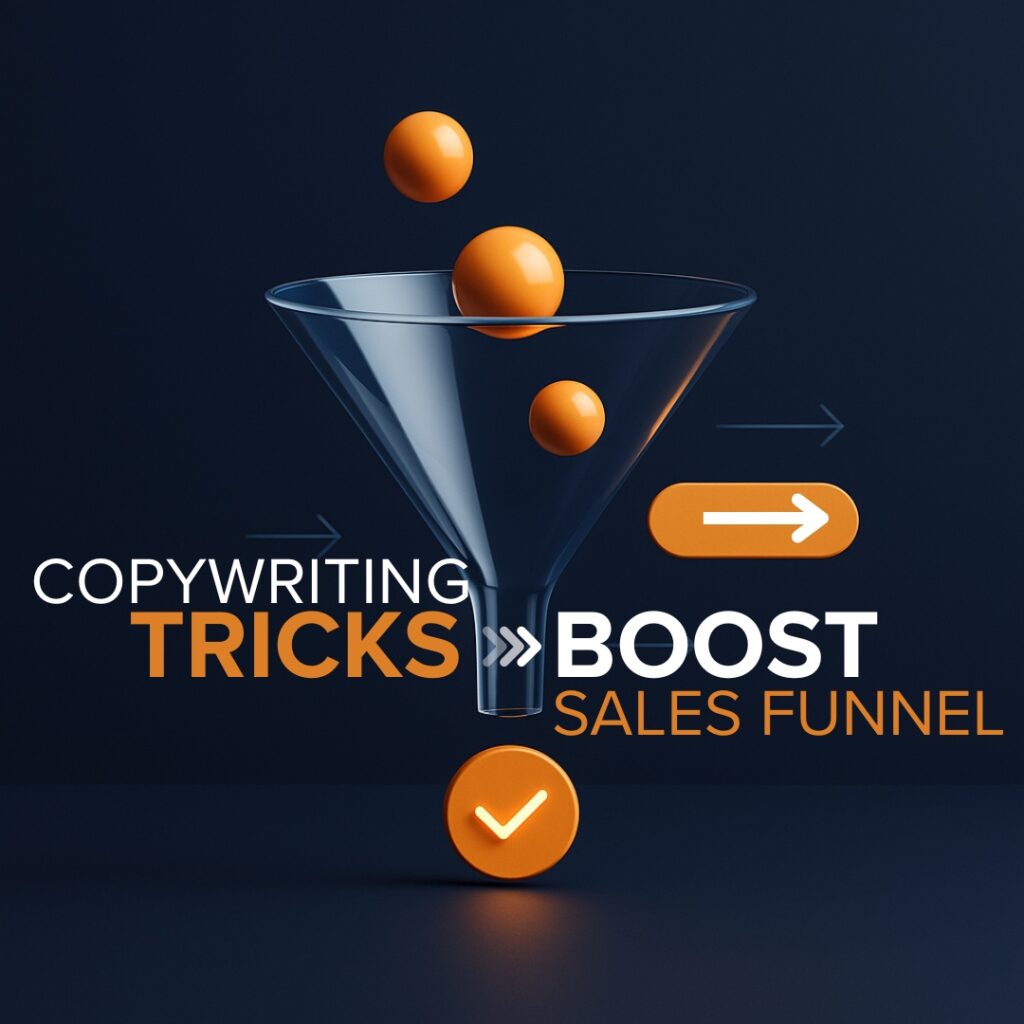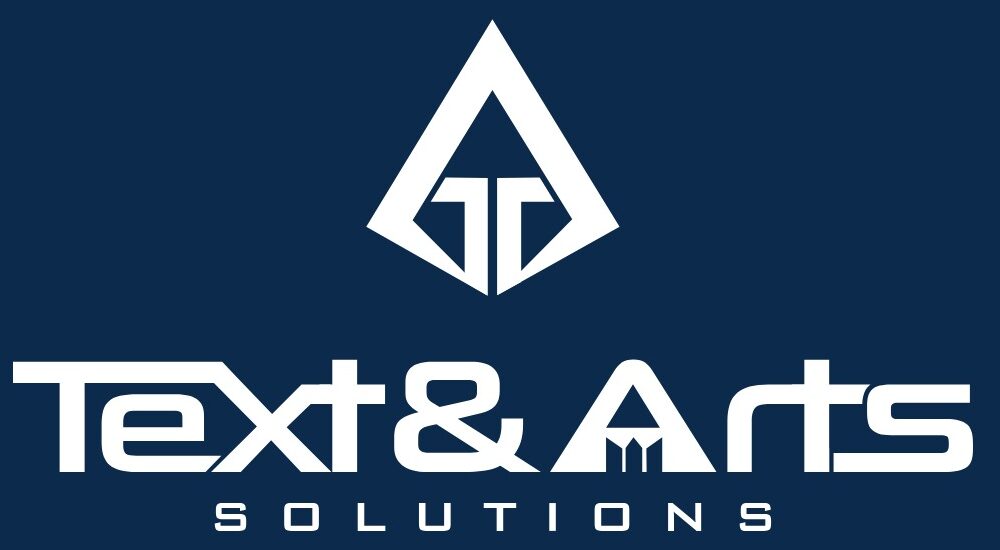Introduction
The right words can move markets. In an age of short attention spans and endless choices, persuasive copywriting is how brands turn attention into action—clicks into carts, demos into deals, and trials into loyal customers. It’s the connective tissue of your sales funnel: the headlines that stop the scroll, the emails that earn replies, the microcopy that calms last-minute fears at checkout.
At Text & Arts Solutions, we’ve seen this up close. After working for six years in translation across domains, we’ve learned that human nuance is non-negotiable—especially in Hindi and other Indian languages. Machines can translate, but they don’t always persuade. Culture, context, rhythm, and register decide whether a message feels natural, trustworthy, and compelling. That’s where persuasive copywriting—rooted in psychology, tested by data, and tuned to local language—becomes a measurable growth lever.
In this guide, you’ll learn the psychology, frameworks, funnel strategies, and Indian-language nuances behind persuasive copywriting, plus practical examples you can use today.
What Is Persuasive Copywriting—and Why It Powers Your Funnel
Persuasive copywriting is the strategic use of language to influence decisions ethically. It’s not about trickery; it’s about clarity, empathy, and timing. At every stage of your sales funnel—awareness, consideration, decision, and retention—the right message answers one question: “Why should I act now?”
The Role of Copy in Each Funnel Stage
- Awareness (TOFU): Hook attention with a clear promise. Headlines, social posts, ads.
- Consideration (MOFU): Build belief and reduce doubt. Product pages, comparison guides, case studies.
- Decision (BOFU): Remove friction at the moment of truth. Pricing pages, trial sign-ups, checkout flows.
- Retention/Expansion: Nurture trust and unlock new value. Onboarding sequences, upsell prompts, referral nudges.
Key outcomes copy can drive:
- Higher click-through rate (CTR) on ads and emails
- Improved conversion rate (CVR) on landing pages
- Lower drop-off at form fields and checkout
- Higher average order value (AOV) via cross-sell/upsell language
- Better retention via clear in-app guidance and supportive tone
The Ethics of Persuasion
Use urgency, scarcity, and social proof responsibly. Ethical persuasive copywriting clarifies value and helps the right customers decide faster. If a tactic wouldn’t make sense face-to-face, don’t write it.
The Psychology Behind Persuasive Copywriting
Copy that converts feels obvious in hindsight. That’s because it aligns with how people naturally think and decide.
Attention, Clarity, and Cognitive Ease
- Be concrete: “Ship in 24 hours” beats “fast shipping.”
- Reduce friction words: Avoid hedges like “might,” “try to,” “hopefully.”
- Use familiar patterns: Lists, subheads, and short paragraphs lower reading effort.
Quick checklist
- One idea per sentence
- Verbs before adjectives
- Replace jargon with the customer’s own words
Social Proof, Authority, and Reciprocity
- Social proof: Reviews, usage stats, and logos signal safety.
- Authority: Certifications, expert quotes, and awards reduce risk perception.
- Reciprocity: Free tools and valuable content create goodwill that often returns as action.
Example:
“Trusted by 1,842 D2C brands” + “Rated 4.8/5 from 3,200 reviews” + “FSSAI-compliant packaging workflows”—three lines that de-risk a purchase for a food startup.
Loss Aversion, Scarcity, and Urgency (Use with Care)
- People fear losses more than they value gains.
- Scarcity works when it’s real: limited seats, limited batch, limited time.
- Urgency must be specific: “Offer ends Friday, 11:59 PM IST” beats “Limited time.”
Framing, Anchoring, and Contrast
- Framing: Position your product as the “default smart choice.”
- Anchoring: Show a premium plan first so your standard plan feels affordable.
- Contrast: Put your unique outcome next to a common pain to heighten value.
Persuasive Copywriting Frameworks That Just Work
Frameworks help you write fast without sounding formulaic.
AIDA—Attention, Interest, Desire, Action
Use cases: Ads, hero sections, email intros.
Example (SaaS analytics)
- Attention: “Meet the dashboard your team will actually use.”
- Interest: “Auto-summaries, anomaly alerts, and plain-English insights.”
- Desire: “Teams cut weekly reporting time by 7 hours.”
- Action: “Start your 14-day free trial.”
PAS—Problem, Agitate, Solution
Use cases: Landing pages, LinkedIn posts, sales emails.
Example (D2C skincare)
- Problem: “Breakouts right before big days?”
- Agitate: “You try to hide it. Photos, meetings, plans—everything shifts.”
- Solution: “Clinically-tested actives that calm inflammation in 24 hours. See the difference in 7 days.”
FAB and BAB—Features/Advantages/Benefits & Before/After/Bridge
- FAB: Translate features into outcomes.
- Feature: “AES-256 encryption.”
- Advantage: “Enterprise-grade security.”
- Benefit: “Your customer data stays safe—period.”
- BAB:
- Before: Complex hiring workflows
- After: One-click job distribution
- Bridge: “Centralize hiring across 20 job boards from a single view.”
4P—Picture, Promise, Prove, Push
Use cases: Product pages, long-form emails.
- Picture: Paint the ideal outcome.
- Promise: State the specific gain.
- Prove: Testimonials, demos, numbers.
- Push: CTA with risk reversal (trial, guarantee, easy cancel).
The “So-That” Test and the “Because” Boost
- So-That: After any sentence, add “so that…” to force customer-centric clarity.
- “We compress images—so that your pages load 40% faster and rank higher.”
- Because: Adding a reason increases compliance.
- “Join the demo because we’ll tailor it to your goals in 15 minutes.”
Crafting Copy for Every Stage of the Sales Funnel
Each stage needs a different voice, structure, and level of detail.
TOFU—Stop the Scroll, Spark Curiosity
Headlines that hook
- “Stop guessing. Start growing.”
- “Your marketing ops, minus the mess.”
- “The no-drama payroll for busy founders.”
Tactics
- Make the benefit explicit in the first 8–10 words.
- Use number-based specifics: “Cut CAC by 23%.”
- Borrow authority: “As featured in …”
- End every post with a next step (read, watch, try).
MOFU—Build Belief, Handle Objections
Assets: Comparison pages, case studies, FAQs, webinars.
Copy moves:
- Head-to-head clarity: “Why [You] vs [Competitor] for teams under 50.”
- FAQ as friction removal: Pricing, data, support, migration.
- Case story beats: Situation → Solution → Outcome → Quote → CTA.
MOFU example (B2B HR tech)
- “Migrate in a weekend—without losing a single record.”
- “Payroll compliant in 29 states, with audit-ready logs.”
- CTA: “See your migration plan (3 minutes).”
BOFU—Close the Gap at the Moment of Truth
Assets: Pricing page, checkout, proposal page, trial-to-paid sequence.
Copy moves:
- Risk reversal: “Cancel anytime,” “No card required,” “30-day guarantee.”
- Specific CTAs: “Book your onboarding call,” not “Submit.”
- Stack value: Remind of benefits near price selectors.
- Micro-nudges: “Only 2 seats left at this rate.”
Retention and Expansion—Keep the Promise
Assets: Onboarding flows, in-app tooltips, success emails, referral requests.
Copy moves:
- First-run wins: “Create your first report in 60 seconds.”
- Progress markers: “Step 2 of 3: Connect your store.”
- Proactive support: “Stuck? Chat in-app—avg. reply time 3 minutes.”
- Referral framing: “Know a team drowning in spreadsheets? Get ₹1,000 when they join.”
Words That Sell in Indian Languages—Where Human Touch Wins
Machine translation can be fluent without being persuasive. Over six years of hands-on translation across sectors, we’ve seen subtle choices in Hindi and other Indian languages make or break conversions.
Tone, Register, and Cultural Fit (Hindi Focus)
- Formal vs colloquial:
- Formal: “कृपया पंजीकरण करें”—polite, official.
- Colloquial: “अभी रजिस्टर करें”—friendly, modern UX vibe.
Use formal for government/finance; colloquial for consumer apps and D2C.
- Respectful address: “आप” creates warmth without over-familiarity.
- Borrowed words vs pure Hindi:
- “ऑफर,” “डील,” “सेल” often outperform literal alternatives in D2C contexts.
- “मुफ़्त” vs “फ्री”: audience preference varies by region and brand voice.
CTA examples (tested patterns)
- “अभी खरीदें” (act now)
- “आज ही शुरू करें” (reduce procrastination)
- “डेमो बुक करें” (B2B clarity)
- “निःशुल्क ट्रायल” (risk reversal, formal tone)
Nuance Across Indian Languages—Why It Matters
- Marathi: “मोफत” (free), “आता खरेदी करा” (buy now).
- Bengali: “এখনই কিনুন,” “ফ্রি ট্রায়াল.”
- Gujarati: “હમણાં ખરીદો,” “મફત ટ્રાયલ.”
- Tamil: “இப்போது வாங்குங்கள்,” “இலவச முயற்சி.”
- Telugu: “ఇప్పుడే కొనండి,” “ఉచిత ట్రయల్.”
Small choices affect trust. A payment page in mixed-script Hinglish might convert well for youth fashion, but formal Devanagari could outperform it for banking.
Localization Checklist for Persuasive Copy
- Dates, numbers, and currencies in the audience’s familiar format
- Script consistency (Devanagari vs Latin)
- Avoid double negatives; keep sentence order natural
- Translate intent, not just words (benefit > feature)
- Validate idioms and metaphors; avoid region-specific slang unless intentional
- Prioritize legibility on mobile (font size and word breaks)
Examples—Transcreating Headlines That Convert
- English → Hindi
- “Stop wasting ad spend” → “बेकार ऐड खर्च रोकें—सही ग्राहकों तक पहुँचें।”
- “Launch your store in a day” → “अपनी दुकान आज ही शुरू करें—24 घंटे में लाइव।”
- English → Marathi
- “Payroll you don’t have to think about” → “विचार न करता चालणारं पेरोल.”
- English → Bengali
- “Your data, always secure” → “আপনার ডেটা—সবসময় সুরক্ষিত।”
Bottom line: Translation without human sensitivity can be accurate and still underperform. Persuasive copywriting in Indian languages demands cultural judgment only experienced people can bring.
High-Impact Components—Headlines, Leads, CTAs, and Microcopy
A few hotspots drive most of your conversions. Focus here first.
Headline Archetypes That Sell
- Outcome first: “Cut onboarding time by 50%.”
- Time-boxed win: “Publish your first post in 10 minutes.”
- Category flip: “Email that writes itself.”
- Number + noun: “7 playbooks for higher LTV.”
- Risk reversal: “Try risk-free for 30 days.”
- Pattern interrupt: “Spreadsheets aren’t a strategy.”
- Community pull: “Join 12,000 founders shipping weekly.”
- What’s new: “The first payroll built for freelancers.”
- Contrarian: “Don’t A/B test—A/Z test.”
- Specific promise: “Faster refunds. Fewer chargebacks.”
- Shortcut: “From idea to invoice in one day.”
- Pain relief: “Cancel churn before it starts.”
Lead paragraph tip: Echo the headline, name the pain, promise the relief, and preview the proof.
CTA Principles That Move People
- Start with a verb: “Get,” “Start,” “Book,” “Download.”
- Add specificity: “Get my audit (free).”
- Reduce risk: “No card required.”
- Place CTAs early and often: At top, mid-page, and bottom—each with context.
- Button microcopy matters:
- Good: “Get the template”
- Better: “Send me the 7 templates”
Microcopy That Removes Friction
- Form labels: Use plain language (“Work email”).
- Helper text: “We’ll never share your address.”
- Error states: Tell them how to fix it (“Add +91 before your number”).
- Empty states: Teach the next step (“Upload your first file to get started”).
- Checkout nudges: “Secure checkout • UPI/NetBanking/Cards accepted.”
Storyselling—Proof Beats Hype
Facts tell. Stories sell—when they’re specific and verifiable.
A Simple Story Spine for Case Studies
- Hero: The customer, not your brand.
- Problem: The costly pain with stakes.
- Guide: Your product enters with empathy.
- Plan: The step-by-step solution.
- Proof: Metrics, screenshots, quotes.
- Transformation: The new normal after success.
- CTA: Invite similar heroes to act.
Example outline (B2B staffing):
A Mumbai agency struggled with week-long candidate screening. After switching to automated assessments, placements rose 31% and time-to-hire dropped from 9 days to 4. “We finally stopped firefighting,” says the founder. → CTA: “See the 3-step screening workflow.”
Proof Assets That Increase Conversions
- Numbers: “Cut refund times from 5 days to 2 hours.”
- Screenshots: Before/after dashboards.
- Short quotes: Avoid generic praise; aim for concrete outcomes.
- Named logos: When permissions allow, place high-trust brands above the fold.
- Independent badges: “G2 Leader,” “ISO 27001,” “FSSAI compliant,” etc.
Data-Driven Iteration—Write, Test, Repeat
Persuasive copywriting compounds with testing. Treat every message as a hypothesis.
Set Your KPIs
- TOFU: CTR, scroll depth, time on page.
- MOFU: Demo requests, free trials, add-to-carts.
- BOFU: Checkout completion, win rate, average order value.
- Retention: Activation rate, feature adoption, expansion MRR.
A Simple 7-Day Copy Sprint
- Day 1: Gather voice-of-customer data (reviews, chats, calls).
- Day 2: Draft two headline/lead angles using AIDA and PAS.
- Day 3: Build a test landing page with both variants.
- Day 4–5: Run traffic (even a small, targeted audience helps).
- Day 6: Analyze; keep the winner.
- Day 7: Roll out to emails/ads; plan the next test.
A 30-Minute Copy Audit (Run Monthly)
- Does the headline promise a clear, specific outcome?
- Are benefits visible above the fold?
- Are objections answered near price and forms?
- Do CTAs specify the win and reduce risk?
- Do images/captions reinforce the message?
- Is the localized copy culturally precise (Hindi/other)?
- Are error messages helpful and human?
Work with Text & Arts Solutions—Copy That Sells in Any Language
If you want words that consistently turn attention into action, you need three things: a clear promise, persuasive structure, and language your audience actually speaks. That’s our sweet spot.
What we do
- Persuasive copywriting for websites, landing pages, ads, emails, product UX, and video scripts
- Localization & transcreation in Hindi and major Indian languages (nuance over literal)
- Voice-of-customer research to mine phrases that already persuade your market
- Testing & optimization sprints to keep improving CTR and CVR
- Creative production—because great words shine brighter with great visuals
Why Text & Arts Solutions
- 6+ years across translation and content for Indian markets
- Bilingual expertise (English ↔ Hindi + regional languages)
- Data-backed approach, human tone, brand-safe ethics
- “Creating Impact with Words & Visuals”—your message, made memorable
Next step: Share your goal (more demos, more carts, more upgrades). We’ll suggest three persuasive angles and a starter test plan you can run this month.
Conclusion
At its core, persuasive copywriting is the practice of clarifying value at the exact moment your customer needs it. It’s the headline that names their goal, the paragraph that mirrors their pain, the CTA that makes the next step feel obvious—and the microcopy that keeps them confident all the way to “Done.”
Frameworks like AIDA, PAS, FAB, and 4P keep your writing focused. Psychological principles—social proof, reciprocity, framing, and loss aversion—make your message believable. Data turns good lines into reliable growth. And in India’s multilingual reality, persuasive copywriting demands human sensitivity to tone, register, and cultural nuance—especially in Hindi and other Indian languages. That human touch is what transforms accurate translation into effective persuasion.
If you’re ready to turn words into measurable wins, partner with a team that blends psychology, language expertise, and design. With persuasive copywriting, your funnel won’t just get fuller—it’ll flow faster.


